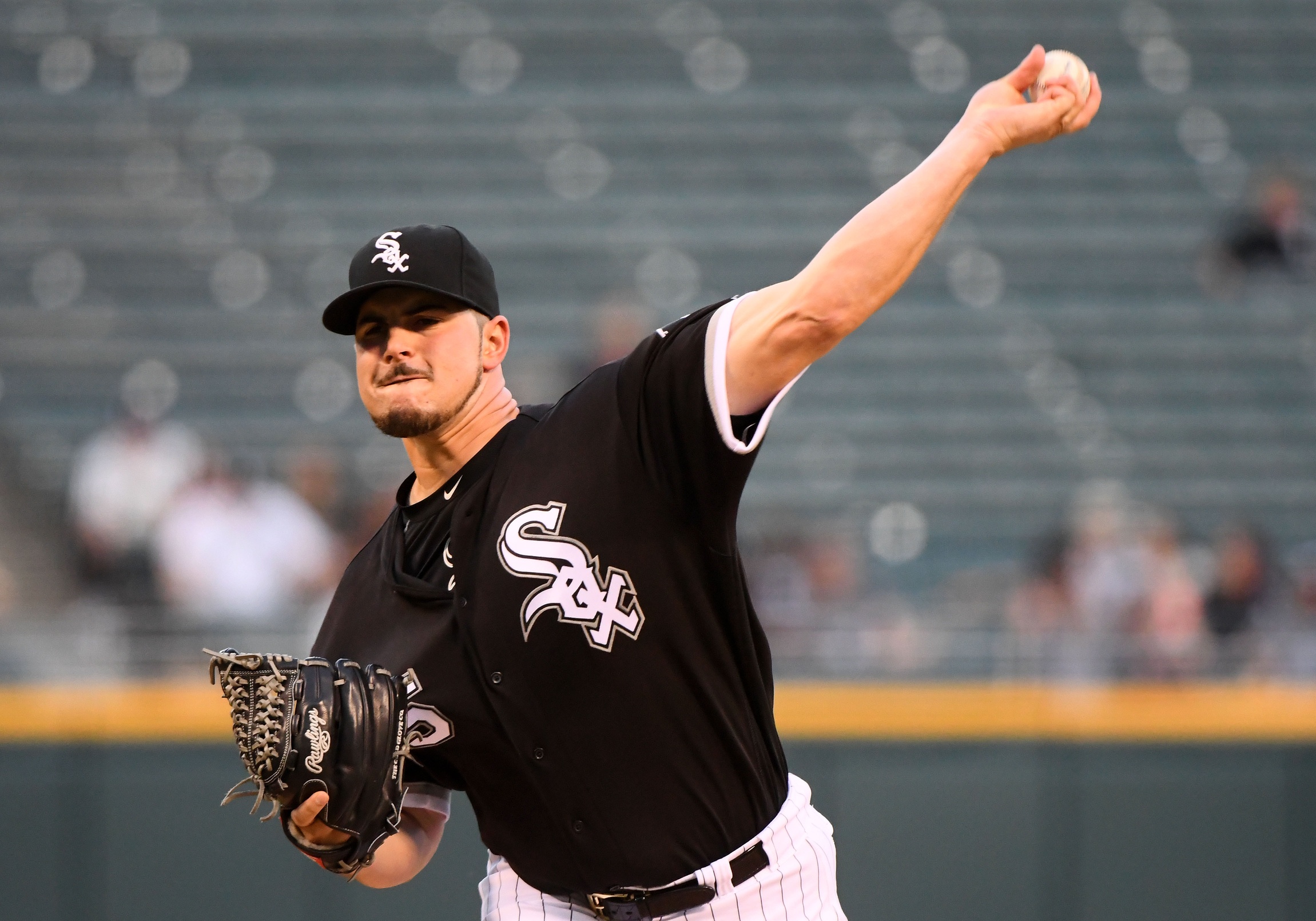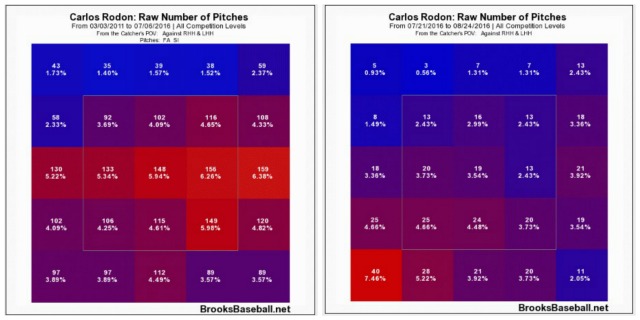The Phillies only having one good left-handed hitter on their entire roster is mostly disastrous, but it puts them in a position to do something pretty sharp. Against Carlos Rodon, who came into Tuesday night with right-handers hitting .305/.365/.484 off of him–even with his hot August beginning to factor in–the Phillies trotted out an all-righty lineup.
If Rodon wants to be like Chris Sale and Jose Quintana–who are both holding righties to a sub-.700 OPS this season–like he said after Tuesday’s game, he will to need to build out his set of tools for attacking right-handed hitters. Since he’s returned from the disabled list, that’s clearly been a focus.
Per Brooks Baseball, Rodon only used his changeup slightly over six percent of the time before going on the disabled list in early July, with five starts where he threw the pitch once or twice all game. Since returning, that’s jumped up to over 17 percent–much more a legitimate tool than a show-me pitch.
But since Rodon is going to face an overwhelming majority of right-handed hitters for the rest of his career (81.7 percent of his batters faced this year), and since his slider is his most elite tool, he can’t spend the rest of his life trying to get by primarily with his average change. Like Sale, he is going to need to be able to utilize his slider for different purposes and in different ways than simply a super-hard, wipeout offering that destroys lefties but has diminishing returns elsewhere, and it sounds like there was some realization of that in process Tuesday.
Not that the fire to see more Omar Narvaez needed any more stoking given the type of year Dioner Navarro has had at and behind the plate, but this quote Rodon gave Dan Hayes about Narvaez adjusting mid-game to try to use his slider as an outside corner strike-grabber is eye-opening, both for Rodon’s comfort in altering his approach and the implied framing work:
“The slider wasn’t working too good down and in, they’d take it, so Omar set up a tad outside and just brought it back in,” Rodon said. “It was nice. It was huge. Had something to gauge off of to get that slider off the outside corner and it worked out well.”
However, this may be overthinking it all, or at the least, focusing on details rather than the big picture. When Collin Whitchurch spoke to Don Cooper at the beginning of July, the legendary pitching coach didn’t speak about varying his slider, implementing the change, learning a cutter, manipulating gravity with his mind, cooking waffles with his feet, or anything complicated.
“We’re just trying to get more strikes out of him,” Cooper said. “He’s got a great slider and the fastball can be good when he’s locating. If he can get ahead in the count he can be deadly.”
Rodon needs his changeup, and he needs a varied slider which can add some deception with his change because they can overlap in speed when he throws the softer version on the outer half, but his fundamental truth is that his stuff is good enough that he’ll never be in too much trouble if he stays ahead and just gets in the zone.
Cooper put a target of the league-average 60 percent first strike percentage for Rodon. He’s still well below that at 51.8 percent for the year, was 13 of 24 Tuesday night, and has been mostly abysmal at it (under 50 percent) since returning from injury.
Pulling away from the numbers and re-watching Rodon’s Tuesday start, what strikes me is not that he uses his changeup at equal measure as his slider, but how much heavy lifting he left to his fastball. Last year, Rodon seemed to be adjusting to how rarely major league hitters chase compared to his previous competition. Now, he understands that he has a fastball that averages 95 mph (at least it did on Tuesday) and that he can live with the damage it incurs in the zone, particularly given what it allows him to set up on the edges with his off-speed stuff.
Instead of staying away from damage with it like every other pitch, Rodon now uses it to attack right-handers inside, allowing him to get weak swings on off-speed stuff when he stays away. His one strikeout with the slider Tuesday came after busting Carlos Ruiz in hard, sneaking a changeup for a called strike, then getting a whiff on a not very good high slider for which Ruiz just didn’t have the timing after working to protect his inner half.
That’s a fun snapshot, but if this year of Rodon has taught anything, it’s that pitching development doesn’t always have that sort of satisfying cause and effect of immediate results. If we draw back we can see how Rodon has progressed and matured, but he remains a wunderkind with a difficult development profile that could easily remain frustrating, until the time comes when it suddenly is not.
Lead Image Credit: Mike Dinovo // USA Today Sports Images


1 comment on “Rodon’s war against the other side”